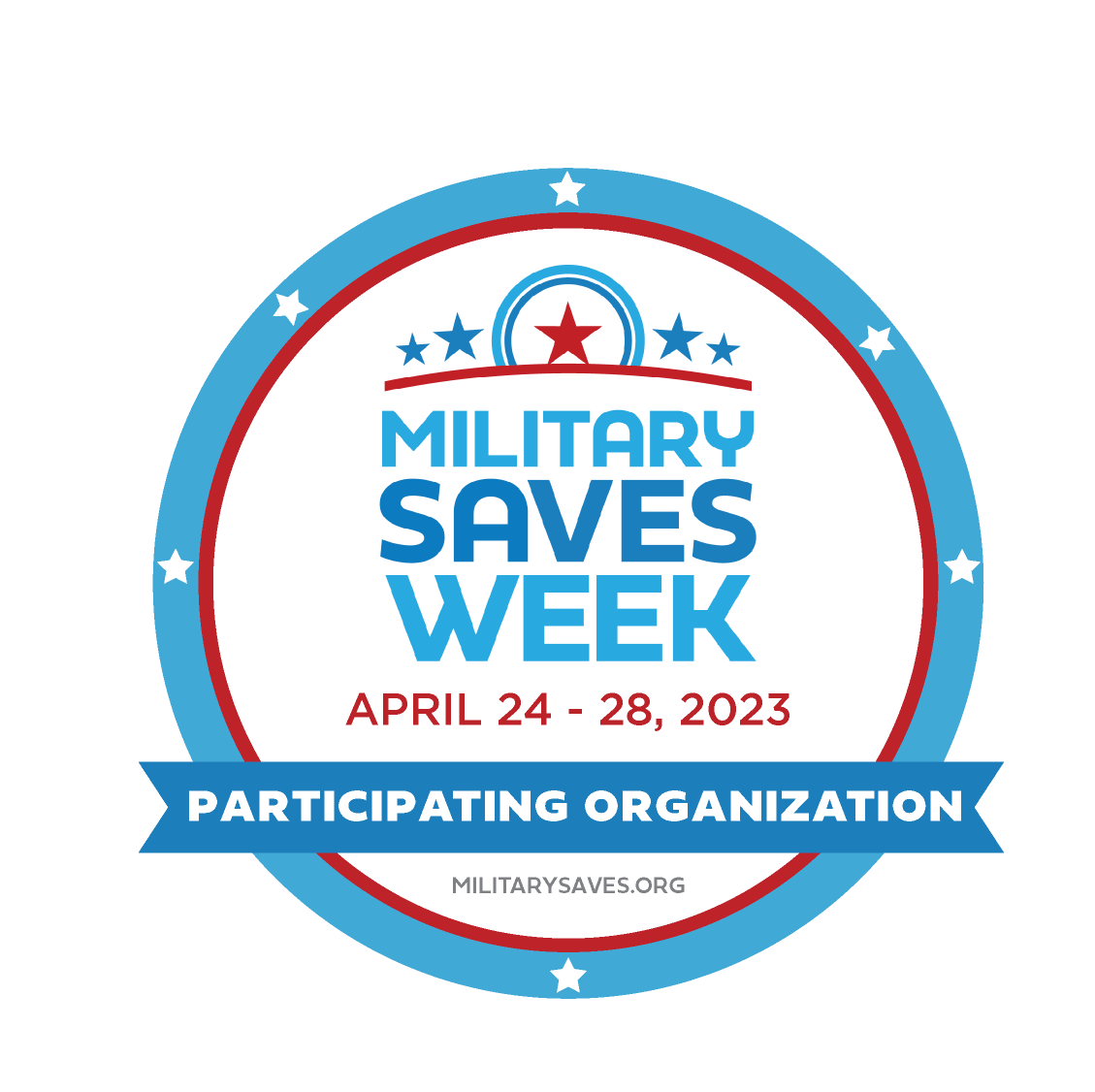At Ohio’s 529 Plan, CollegeAdvantage, we believe all types of savings are critical for your family’s financial success, not just higher education savings. That’s why we are a proud supporter of Military Saves and Military Saves Week, which runs from April 24-28, 2023. 
Military Saves Week was established to encourage households and individuals to develop good saving habits. Military Saves is a component of the America Saves organization, which managed by the Consumer Federation of America (CFA), dedicated to helping individuals save money, reduce household debt, and build wealth.
This year, Military Saves Week theme is “ A Financially Confident You.”
April 24 — Save Automatically
April 25 — Save for the Unexpected
April 26 — Save for Major Milestones
April 27 — Paying Down Debt Is Saving
April 28 — Save at Any Age
Like all participating organizations, Ohio’s 529 Plan encourages you and your family to set a financial goal together, make a plan to achieve it, and then save automatically, heading off the possibility that you might spend the money elsewhere. Ohio’s 529 Plan is honored to have been recognized in 2021 as a Savings Champion by Military Saves. We truly believe financial education is crucial for every family and are proud to support Military Saves efforts to “motivate, support, and encourage the entire military community to save money, reduce debt, and build wealth.”
Since 2007, more than 340,000 individuals have taken the Military Saves Pledge. If you’d like to commit to saving a certain dollar amount over a set period of time, you can take the Military Saves pledge. You will receive encouragements, advice, and reminders to keep focused on your goal.
“Readiness, a term that all Military personnel can wholeheartedly understand, is the preparedness of persons, systems, or organizations to meet a situation and carry out a planned sequence of actions. Just as Military personnel must be prepared for current and future missions, personal readiness for life’s contingencies is equally important,” said Tim Gorrell, former executive director of Ohio’s 529 Plan.
If one of your long-term savings goal is paying for some of your children’s future higher education, visit Ohio’s 529 Plan to learn about all the benefits of saving in a 529 plan. In addition to all the tax advantages, you can save in Ohio’s 529 Plan and use those funds nationwide to pay for qualified higher education expenses at four-year colleges and universities, two-year community colleges or technical schools, trade or vocational schools, apprenticeships, and certificate programs that have a Federal School Code on the Free Application for Federal Student Aid (FAFSA). 529 plans can now be used at apprenticeship programs registered with the Secretary of Labor’s National Apprenticeships Act.
A 529 plan can supplement your Post-9/11 GI Bill. Administered by U.S. Department of Veterans Affairs (VA), this federal program assists in transitioning our veterans back to civilian life by paying their higher education expenses—whether undergraduate or graduate school, vocational/training programs, apprenticeships, and flight training. The GI Bill includes 36 months of education benefits: full in-state public school tuition and fees (there is a national maximum rate cap for tuition and fees for attending a private college), monthly housing allowance if a veteran is in school more than half time, and an annual books and supplies stipend.
If service members choose not to use all of these benefits for their own higher education, they can transfer unused GI bill benefits to their dependents, either their spouses or children, to pay for their college or vocational training.
If you split your Post-9/11 GI Bill benefits among multiple dependents, then a 529 plan can help cover the remaining qualified higher education expenses associated with attending a two-year or four-year college, trade or vocational school, apprenticeship, or certificate program. Eligible expenses range from tuition; mandatory fees; computer equipment and related technology and services; books; supplies, and equipment required for enrollment or attendance; room and board costs or off campus housing during any academic period the beneficiary is enrolled at least half-time; and certain expenses for a special-needs student. Room and board costs can also include rent for off-campus residency and groceries (non-taxable items), provided these costs are equal or less than the same room and board allowances from the accredited education institution. Also, qualified apprenticeships costs such as fees, textbooks, supplies, and equipment like required trade tools can now be paid for with a tax-free 529 withdrawal. The apprenticeship program must be registered with the Secretary of Labor’s National Apprenticeships Act in order to use a 529 plan withdrawal. Interested parties can check the U.S. Labor Department’s search tool to confirm that a program is registered, and therefore, eligible for a 529 withdrawal.
The State of Ohio also offers many academic programs to support military service members as they work towards their higher education. Ohio's 529 Plan is sharing some of the available assistance from the Ohio Department of Higher Education.
- CLEP exams were created to help individuals with prior knowledge of a college-course subject earn college credits toward a degree efficiently and inexpensively. CLEP exams cover introduction-level college course material. With a passing score on a CLEP exam, military service members or veterans could earn college credits at an Ohio institution of higher education. Currently, the Department of Defense through the Defense Activity for Non-Traditional Educational Support (DANTES) will pay for eligible service members, Coast Guard spouses, and civilian employees of the Air Force to take each CLEP exam one time.
- Military Transfer Assurance Guides (MTAGs) are a statewide set of standards that guarantees that certain types of military training, experience, and/or coursework will align to existing college and university course(s). MTAGs are currently aligned to other statewide course equivalency initiatives in the state. Those initiatives are Career-Technical Credit Transfer (CT2) which covers career and technical education (e.g. nursing), Ohio Transfer Module (OTM) which covers general education requirements, and Transfer Assurance Guides (TAGs) which covers beginning and pre-major courses. An interactive list of applicable military training and its alignment to specific college course at institutions can be found here. Students should meet with the Military Credit Contact at their institution to have their experiences evaluated for credit.
- The Veterans Service Office is the place on campus where veterans can go to access the benefits that are available to them. The office will act as the liaison between multiple offices on campus and the veteran or service member. Some of the services include the evaluation of military transcripts for college credit, career services, and priority course registration. Depending on the size of the institution, the office can be freestanding or located within the confines of another office on campus.
- Military Credit Contact is the person on college campus who is responsible for making sure that military transcripts are received and evaluated so that all applicable military training and education can be transferred for college credits. They will also handle requests to resolve disputes about the credit awarded for previous military experience. This person is usually located within the institutions registrar’s office, records office, or transfer office.
- War Orphan and Severely Disabled Veterans’ Scholarship awards tuition assistance to the children of deceased or severely disabled Ohio veterans who served in the armed forces during a period of declared war or conflict. A recipient must be an Ohio resident and enrolled in full-time undergraduate study to pursue an associate or bachelor's degree at an eligible Ohio college or university. Applicants must be between the ages of 16 and 25 to apply. Applications are due in the month of May.
- Ohio Safety Officers Memorial College Fund provides tuition assistance to Ohioans who are the children and spouses of peace officers, fire fighters, and other safety officers, who are killed in the line of duty, anywhere in the United States. The fund also provides assistance to the children and spouses of a member of the armed services of the U.S., who has been killed in the line of duty during Operation Enduring Freedom, Operation Iraqi Freedom, or a combat zone designated by the President of the United States. The child is only eligible for this program if he/she is not eligible for the Ohio War Orphans Scholarship.
- Ohio National Guard Scholarship Program provides tuition assistance to Ohio National Guard members attending a two- or four-year public college or university. Participants must commit to and/or complete a six-year enlistment in the Ohio National Guard. ONGSP scholarships are available for both full-time and part-time students who are actively enrolled in at least three credit hours or more of coursework.
Visit Ohio’s 529 Plan online to start saving today for your child’s future education. An investment in a 529 plan is an investment in your child where every dollar saved today is a dollar that doesn’t have to be borrowed later. A 529 account can be used for whatever school comes after high school. Learn, plan, and start with as little as $25 with Ohio’s 529 Plan today at CollegeAdvantage.








